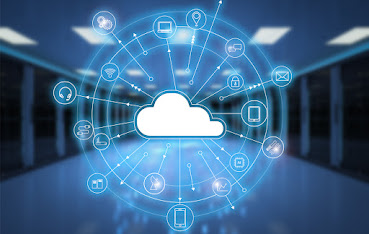The Future of Serverless Cloud: Trends to Watch in 2024 and Beyond
The rapid adoption of serverless
computing is reshaping the cloud landscape, offering developers and businesses
a flexible, cost-efficient way to build and run applications. As serverless
cloud computing continues to evolve, new trends are emerging that will define
its future. In this blog, we’ll explore the top serverless cloud
trends to watch in 2024 and beyond.
1. Wider Adoption of
Serverless Across Industries
In 2024, serverless computing is
expected to see even greater adoption across industries. While traditionally
favored by startups and tech companies, more large enterprises are beginning to
embrace serverless to reduce infrastructure costs, improve scalability, and
streamline operations. Serverless enables companies to focus on building
features and services without worrying about managing servers or scaling
issues.
Industries Likely to Adopt
Serverless:
- Finance: Fintech companies are using
serverless to process high volumes of transactions quickly and securely.
- Healthcare: Serverless platforms allow
healthcare providers to manage patient data, run analytics, and develop
telemedicine applications.
- Retail: E-commerce platforms leverage
serverless to handle unpredictable traffic spikes, especially during peak
shopping seasons.
2. Focus on Multi-Cloud and
Hybrid Cloud Solutions
As businesses increasingly adopt
a multi-cloud or hybrid cloud strategy, the future of serverless computing will
see more seamless integration across different cloud environments. In a
multi-cloud setup, organizations use multiple cloud services from various
providers, while hybrid cloud integrates both public and private clouds.
Serverless frameworks in 2024
will likely offer more tools for managing workloads across different cloud
platforms, giving businesses flexibility and control. This trend will help
organizations avoid vendor lock-in while optimizing costs and ensuring resilience.
Key Advantages of
Multi-Cloud/Hybrid Serverless Solutions:
- Avoiding Downtime: Spreading workloads across
multiple providers can enhance reliability and uptime.
- Optimized Performance: Businesses can run
serverless functions in the best-suited cloud environment for their
specific workloads.
- Cost Management: Companies can use different
cloud providers for different purposes, such as one for data storage and
another for compute-heavy tasks, to optimize costs.
3. Serverless for Edge
Computing
Edge computing involves
processing data closer to the source rather than relying on a centralized cloud
server. Serverless and edge computing are a powerful combination, enabling
real-time data processing at the network edge for faster response times and
reduced latency.
In 2024, we expect to see
increased integration of serverless with edge computing in areas like IoT,
autonomous vehicles, and real-time analytics. By moving some serverless
functions to the edge, businesses can improve application performance,
especially for use cases that demand immediate data processing, such as video
streaming or smart cities.
Benefits of Serverless Edge
Computing:
- Low Latency: Data processing happens closer to
the source, reducing the delay in sending data to a central cloud.
- Scalability: Serverless allows edge devices to
scale up automatically as the data load increases.
- Real-Time Processing: Applications like
AI-driven analytics and IoT sensors benefit from faster decision-making
without relying on a centralized data center.
4. Enhanced Security and
Compliance Tools
As more companies handle
sensitive data in the cloud, serverless platforms are expected to advance their
security features in 2024. There will be a stronger emphasis on security
automation, encryption, and access control mechanisms to meet regulatory requirements
and safeguard data.
Key Security Trends for
Serverless:
- Automated Security Management: Built-in
security measures, such as automated threat detection and response, will
help businesses protect serverless functions from attacks like injection
vulnerabilities.
- Encryption by Default: Serverless platforms
will increasingly offer encryption at rest and in transit as a standard
feature.
- Compliance Monitoring: Businesses in regulated
industries (e.g., healthcare, finance) will have access to tools that
automatically monitor compliance with industry regulations like GDPR or
HIPAA.
5. AI and Machine Learning
Integration
Serverless cloud will play a
larger role in AI and machine learning (ML) by offering on-demand compute power
for model training and data processing. The ability to scale serverless
functions dynamically makes it an ideal choice for AI and ML tasks, which often
involve large datasets and require significant computational resources.
In 2024, we can expect serverless
platforms to offer enhanced support for AI/ML workloads, making it easier to
deploy and scale machine learning models in production environments.
AI/ML Trends in Serverless
Computing:
- Cost-Efficiency: Serverless platforms will
allow businesses to pay only for the compute power they use while running
machine learning algorithms.
- Faster Model Deployment: Serverless frameworks
will support real-time deployment of AI models without the need for
managing complex infrastructure.
- AI-Driven Serverless Optimization: AI
algorithms could be used to optimize serverless workloads, improving
performance and reducing costs automatically.
Conclusion
As we move into 2024 and beyond,
serverless computing is set to continue transforming how businesses build,
deploy, and scale applications. With increased adoption across industries,
enhanced multi-cloud and edge computing capabilities, stronger security tools,
and deeper integration with AI and machine learning, serverless cloud platforms
will play a critical role in shaping the future of cloud technology. For
businesses looking to stay competitive and innovative, keeping an eye on these
trends will be essential.



Comments
Post a Comment